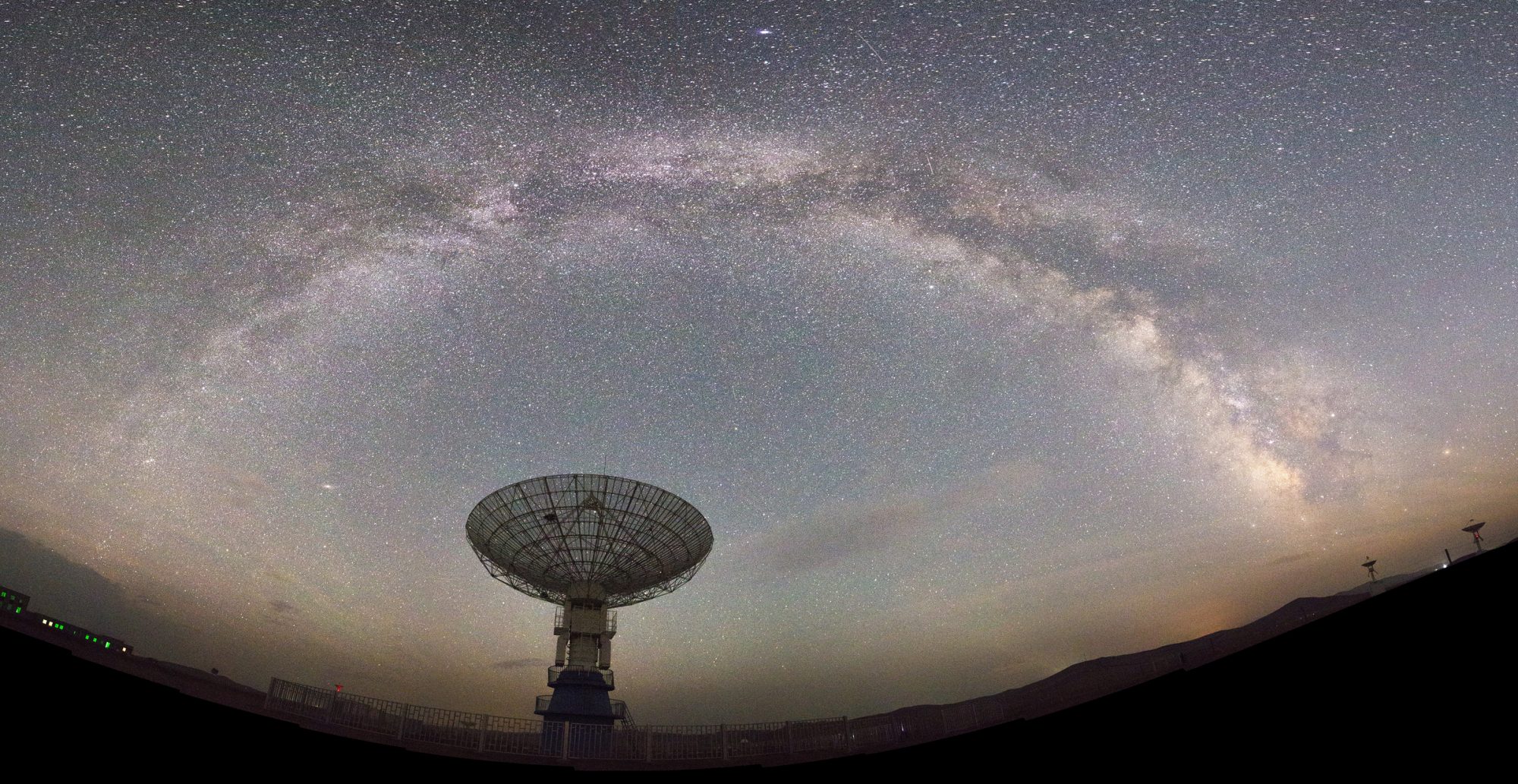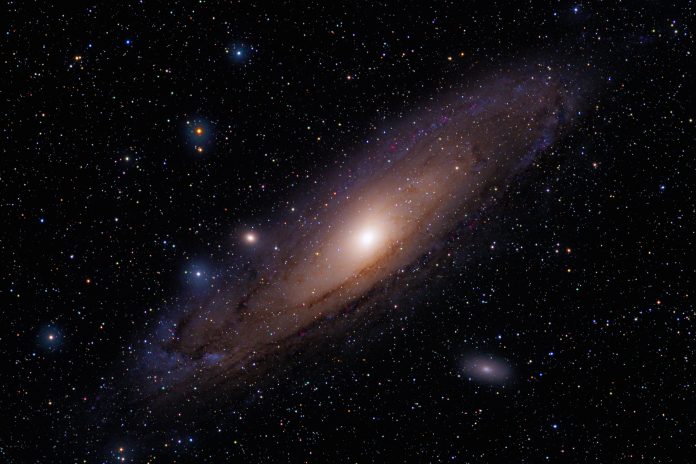On September 13th, a team of international astronomers, including scientists from Queen’s University, discovered two potential polar ring galaxies using CSIRO’S ASKAP radio telescope’s WALLABY survey
This groundbreaking finding has been published in the Monthly Notices of the Royal Astronomical Society.
Nathan Deg and Kristine Spekkens led the research from Queen’s University, both experts in physics, engineering physics and astronomy.
They conducted an in-depth analysis of data collected using a telescope owned and operated by CSIRO, Australia’s National Science Agency.
The power of WALLABY
This data came from observing hydrogen gas in more than 600 galaxies as part of CSIRO’S ASKAP radio telescope’s WALLABY survey.
During this study, they identified two possible polar ring galaxies, a unique galaxy type characterised by a ring of stars and gas that runs perpendicular to its primary spiral disk.
Dr Bärbel Koribalski, Senior Principal Research Scientist, CSIRO, explained that the “ASKAP radio telescope is delivering a flood of data, and we are ready for it. Using ASKAP, full WALLABY will deliver more than 200,000 hydrogen-rich galaxies, among them many unusual objects like polar rings, which can be used to probe the shape and distribution of the dark matter halos.”
WALLABY will deliver more than 200,000 hydrogen-rich galaxies
Although astronomers have encountered polar galaxies before, this is the first observation of galaxies using the ASKAP telescope at Inyarrimanha Ilgari Bundara, CSIRO’s Murchison radio astronomy observatory in Western Australia on Wajarri Yamaji Country.
Based solely on gas detection, these new findings suggest that polar ring galaxies may be more widespread than previously thought.
“These findings suggest that one to three percent of nearby galaxies may have gaseous polar rings, which is much higher than suggested by optical telescopes,” explained Dr. Nathan Deg.
These findings suggest that one to three percent of nearby galaxies may have gaseous polar rings, which is much higher than suggested by optical telescopes
Further studying of polar ring structures can enhance our understanding of galaxy evolution. For instance, one of the main hypotheses to explain the origin of polar rings is a merger where a larger galaxy ‘swallows’ a smaller one. These mergers may occur more frequently if polar ring galaxies are more common than previously assumed.

Future observations
In the future, polar ring galaxies could also deepen our comprehension of the universe, particularly dark matter research.
Polar rings can potentially be utilised to investigate the shape of dark matter within the host galaxy, offering new insights into the mysterious properties of the elusive substance.
Jayanne English, part of the WALLABY research team and an expert in creating astronomy images at the University of Manitoba, produced the initial visuals of these gaseous polar ring galaxies.
This was achieved by combining data from various telescopes, including optical and infrared information from the Subaru telescope in Hawaii, to capture the galaxy’s spiral disk.
Radio emissions, color variations and scientific breakthrough
Data from the WALLABY survey, a global initiative utilising CSIRO’s ASKAP radio telescope to detect atomic hydrogen emissions from around half a million galaxies, incorporated the gaseous ring into the images.
Like this one, astronomical images are composites since they incorporate data beyond what our eyes can see. The cold hydrogen gas, invisible to the human eye, is depicted using CSIRO’s ASKAP telescope in radio “light.”
The ring’s subtle colour variations represent the gas’s orbital motions, with purple tones at the bottom indicating motion toward the viewer and the top showing motion away.
Virtual reality tools were used in collaboration with Professor Tom Jarrett from the University of Cape Town, South Africa, to separate the ring’s emission from radio emission from the galaxy’s disk.
The project involved over 25 researchers worldwide, including Canada, Australia, South Africa, Ecuador, Burkina Faso, Germany and China, who collaborated to analyse the initial public release of the WALLABY survey, resulting in their recent publication.
The team’s next step is to confirm their discovery of polar ring galaxies through additional observations using different telescopes, such as South Africa’s MeerKAT radio telescope.











